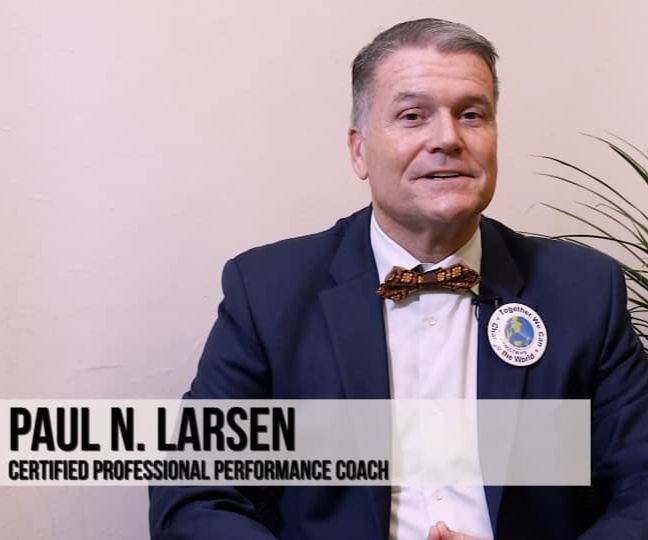Is Your Communication All About You?

Vector image is from freepik.com by @storyset
It’s a typical workday. You rush from meeting to meeting (and yes, you can rush virtually too). Send a few emails and text messages and talk with a team member to update them on things you think they need to know. You then rush to your next meeting.
Sound familiar?
I’ll admit I’ve been guilty of doing this.
It’s a classic case of ‘dump and run’ in action. You have information in your head that you think someone needs to know. Naturally, you want to share it with them, delegate the task or get the issue moving.
When you’re rushing, you’ll likely rush the conversation too. You’ll say what matters to you but have little time to hear the other person. You feel better because you feel like you’ve communicated, and if it’s task-related, you feel good because it’s off your plate and on someone else’s plate. However, the person on the receiving end can feel bewildered, annoyed, frustrated and disengaged.
Research across more than 330 000 leaders, peers and team members found that communication is one of the skills that most significantly impact whether a leader succeeds or not.
Jack Zenger and Joseph Folkman, who conducted the research, provided participants with 16 competencies and asked them to rate the top four essential competencies for roles at different levels of organisational hierarchy. Being able to ‘communicate powerfully and prolifically’ came in at number five. Interestingly, the top competency was ‘inspires and motivates’, and I’d suggest that you can’t do that if you don’t communicate well.
We all know the criticality of good communication, and it’s something that sets good leaders apart. So, do you know whether your communication hits the mark?
This may interest you: Meaningful Communication: The Key to Solving Workplace Problems
Good communication is more than just being an effective orator or a good listener. In fact, there are many considerations. Let’s start with the five communication levels, moving from least effective to most effective.
Starting at level 1 (and the least effective) is DUMPING. This is a one-way conversation. You’re seeking an audience for your voice, and you are thinking (either subconsciously or consciously), ‘It’s all about me’. You focus on getting your idea or issue heard or the information you need to share disseminated. You aren’t interested in conversation or debate.
The next level is DEBATING. At level 2, it’s a contest of words and ideas between the people talking. Each person seeks to ‘win’ the conversation or have the ‘last word’. When you are involved in this type of conversation, you are less concerned with listening and more concerned with getting your point across.
As this helpful Korn Ferry article reminds us, our brain isn’t naturally good at listening. Our brain uses heuristics (essentially mentally short-cuts) to save the brain’s processing capacity, and so it can decide swiftly. This comes into play when we are communicating too. As the other person is talking, you focus on formulating your response. You may jump ahead and assume what they will say next. You can make assumptions about their intent and be easily distracted.
Communicating at level 1 may save you time in the short term, while level 2 can be interesting if you like a rigorous debate with little care for the outcome. However, neither are good strategies to pursue if you want a healthy organisational culture, sustainable results, and sound decision-making.
At a minimum, you want to strive for level 3, which is CLARIFYING. This is where the conversation is much more about the ‘we’, rather than the ‘me’. The conversation is more curious and less judgemental. Both parties are curious, open to learning, and seeking ideas and answers.
This is critical because so much of what is said is not heard, and we can easily misunderstand what the other person is saying. For a conversation to proceed in a manner where both parties walk away with the same level of comprehension, many things need to go right. Both parties need to:
- pay attention and not be distracted
- speak clearly and precisely
- provide all the information needed in the conversation to ensure clarity
- have the same level of comprehension and understanding of the topic and the language used
All those elements are rarely present throughout an entire conversation, so asking questions and clarifying what you’ve heard is crucial. It is easy to misinterpret, miss keywords and then end up with a hazy recollection of what was said.
Even better is level 4, which is SENSE MAKING. A conversation of this nature is open-hearted and open-minded. It involves both parties pushing their thinking into new territory. It’s recognising the impact that context has on what you are saying and how it is interpreted. It’s accepting the role that emotions play in how words are heard.
Through such a dialogue, each person seeks insight, knowledge and more profound understanding as they make sense of what’s happening and how they are interpreting what’s happening.
Discover: Crisis Communication: The Good, The Bad, and The Ugly
The most effective and yet, most challenging to master is level 5 – ADAPTING.
It’s hard to admit you don’t have all the answers and that your knowledge and ideas are imperfect. Being comfortable with admitting you don’t know is a sign of leadership. Conversations of this nature are about exploring possibilities and making decisions conscious of context, the imperfect nature of how we decide and an acceptance that as the leader, you don’t have the licence on being right.
At level 5, you are embracing a much more inclusive communication approach.
Of course, moving up the levels of communication isn’t easy. There may be times when you move up and down the scale depending on who you are conversing with and how you are feeling. As with all skills, it takes time, practice and a desire to improve. It’s also essential if you want to be more influential and to step up and progress.
Remember the wise words of George Bernard Shaw, “The single biggest problem in communication is the illusion that it has taken place”. So if you aren’t sure if your communication has landed or if the conversation has been helpful, engaging and effective, then the best thing to do is to check in and ask.
Leaderonomics.com is an advertisement free website. Your continuous support and trust in us allows us to curate, deliver and upkeep the maintenance of our website. When you support us, you allow millions to continue reading for free on our website. Will you give today? Click here to support us.
Functional
Tags: Communication
Michelle Gibbings is a workplace expert and the award-winning author of three books. Her latest book is 'Bad Boss: What to do if you work for one, manage one or are one'. www.michellegibbings.com.





